Rumble Pie #27
Green Wall or Green Wash?
JUST OVER A MONTH AGO, an American bank announced that it had built what it is billing as the largest green wall in North America. I have major mixed feelings about this new development. On the one hand, it gives green walls great visibility; many more people will come to know of living walls and their beneficial qualities because of this huge installation. On the other hand, this bank has chosen to feature its corporate logo as a graphical element on the green wall itself, by tracing the logos outline using plant varieties of different colours. This has the potential to create disinformation in two ways: one, it can confuse the general population about ecological systems and the way they work; and two, it can obfuscate the truth about the actual business practices of this bank, and its effects on the American economy. Because of this ambivalence, I have included photographs of the giant green wall -- but with their corporate logos digitally blurred out.


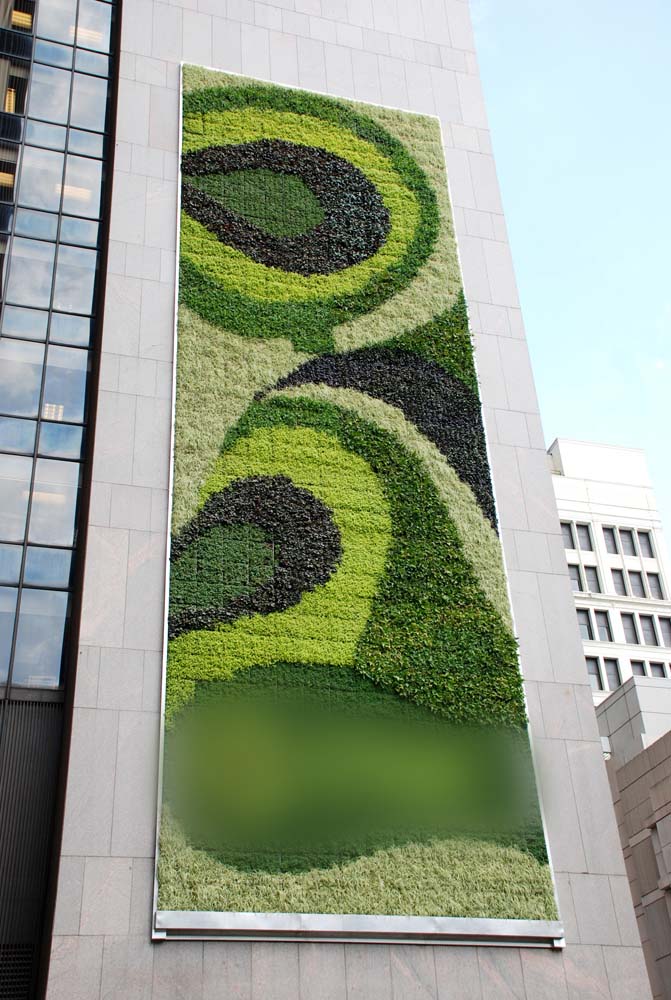
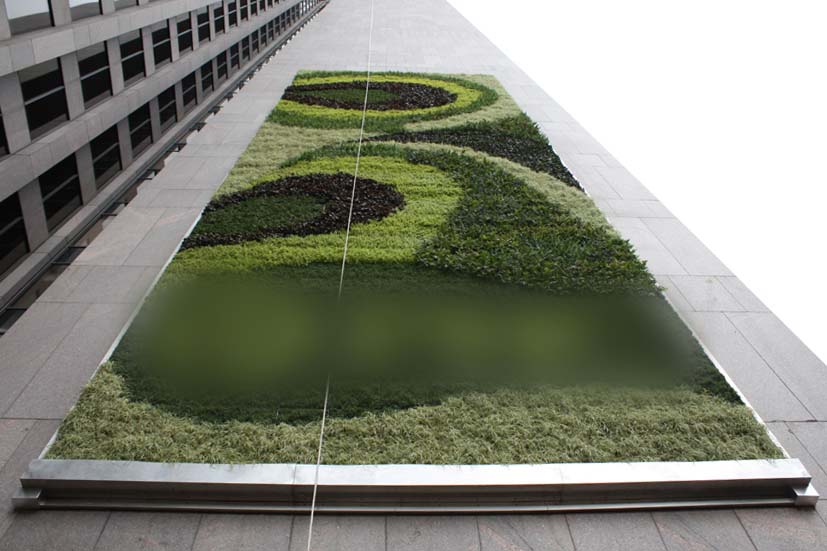
I BELIEVE THAT THE CHOICE to segregate plants by species in order to produce a pixelated grass canvas is an unfortunate one. It perpetuates an aesthetic choice with negative real-world consequences: monocultures are vulnerable to decimating diseases and they skew the mineral content of the earth by sapping it of one kind of nutrient and choking it with another. I'm not saying that you can never plant huge swaths of a single species; I'm just lamenting the fact that if this project is meant to promote a more ecologically-conscious way of organizing our landscape, then the plants should be mainly mixed up in permaculture patterns, lumped into guilds (a guild is a group of plants that are stronger than the sum of their parts). This should be especially important in living walls, where there is very little soil depth to tap into for sustenance, if any at all. So if this project is supposed to preach the green gospel, then sadly, it's been completely dumbed-down.
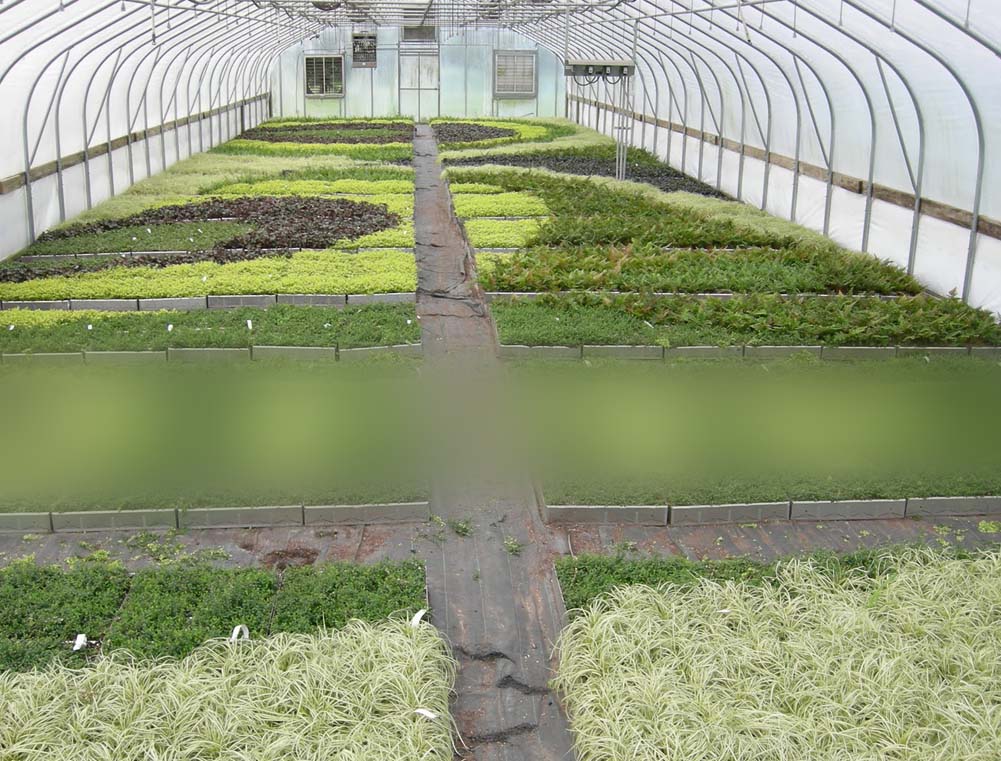
BUT THERE IS ANOTHER TYPE of disinformation that is taking place here, perhaps even more insidious. For the purposes of the remainder of this article, just so that I do not have to keep on calling them "The Bank In Question", let's call them... uh, "B.I.Q.". BIQ's new corporate headquarters is now the tallest building in the entire city. BIQ is the fifth-largest bank in the United States, and it owns the third largest amount of stand-alone ATM's (automated teller machines) in the US. At the end of the 2008 calendar year, BIQ's assets were totaled at an almost unfathomable 291 billion dollars. In the same year, BIQ's CEO "earned" over 8.5 million dollars. On every single day that he worked for BIQ, he took home the same amount of money that the average American worker takes home in an entire year. So why did BIQ need a 48 million dollar subsidy from the American taxpayers in order to build these corporate headquarters? Do these fancy new-fangled eco-features cost 48 million dollars?
B.I.Q. REPORTS THAT THE SIZE of the green wall is 2400 square feet, and the company that built the wall for them claims that it cost between $100 to $125 per square foot. Taking the more expensive figure, that would mean that the price of the wall is only $300,000! So if the public paid for this green wall 160 times over, then why does BIQ take the credit for it with their corporate logo? And as for the astronomical price tag: Does the green wall benefit the public to the tune of 48 million dollars? Any polluted inner-city air filtration function that it could have performed if it existed at street level is rendered nil, by erecting the wall so high in the sky, several stories above human foot traffic -- but just the right height for any pedestrian passing by to notice the ubiquitous BIQ logo. The Largest Green Wall in America is nothing more than a crude advertisement for one of the biggest corporations in America -- paid for by the taxpayers of America.
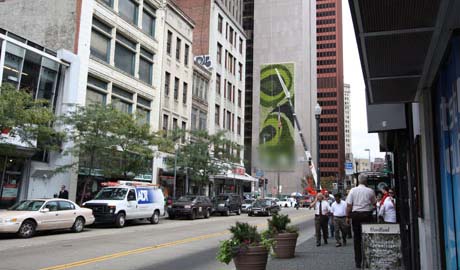
GOVERNMENT HAND-OUTS FOR HUGE banking institutions whose CEO's receive multi-million dollar bonuses, regardless of the quality of their performance -- that didn't begin with BIQ, and as we have seen with glaring clarity in the last few months, to the tune of $12 trillion, it certainly didn't end with BIQ. But BIQ isn't just another ordinary everyday bank (a run-of-the-mill institution that doesn't run any mills, or any other productive activity for that matter). It turns out that it specializes in creative accounting practices that hide financial transactions from public scrutiny, the better to commit crimes. The Securities & Exchange Commission caught BIQ itself hiding over $750 million. Their subsidiary, (let's call them S.I.Q., for "Subsidiary in Question"), was caught aiding and abetting foreign dictators like Augusto Pinochet of Chile (who ordered the murder of thousands and the torture of tens of thousands of his own countrymen and -women), to secretly syphon tens of millions of dollars out of their own countries' economies and hide them in secret personal accounts. This is all a matter of public record.
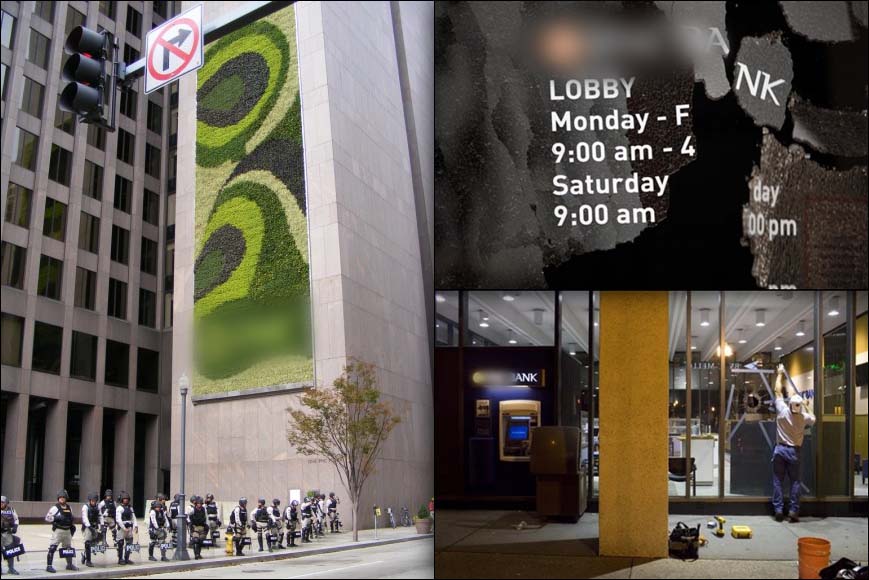
BIQ finished the wall in time for a G20 meeting. Anti-bailout protestors didn't buy the greenwash, and smashed their windows anyways, despite heavy police protection
SO, SUFFICE IT TO SAY that at least as much as any other bank that puts profits before people, BIQ has a PR problem. But citizens are finally starting to speak out against the proliferation of gargantuan billboards and other advertisements that dominate urban areas. Now green is the new black; so how better to whitewash a tarnished corporate image, than by re-branding it as "green"? For a most grotesque appropriation of ecological imagery, witness the billboard below: MacDonald's, more responsible than any other restaurant in the world for environmental devastation, inhumane animal treatment, and poisonous food products, attempts to invert its anti-ecological image with a green wall billboard. Ptew! It's aggravating to see the fruits of our labours go towards the very antithesis of what we believe in. I would much prefer it if the living walls that we build end up benefitting groups of people who put human rights over property rights and actually embrace a real ecological agenda.
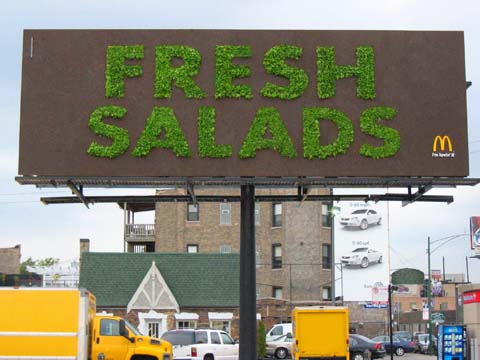
IN THIS MATTER, I HOPE that we can look to groups like ADPSR -- Architects, Designers, and Planners for Social Responsibility -- as an ethical example. As an industry organization, ADPSR takes principled positions, even when they conflict with profit margins. For example, because they believe that the prison-industrial complex in the USA is corporatized and corrupt, they refuse to participate in the planning, designing, and building of new prisons. To be sure, there are plenty of professionals in the US who are only too happy to provide their services to the highest bidder, regardless of who will be affected, and how. But by taking a stand, the members of ADPSR are making a powerful political statement. Of course, political statements alone are not enough to make a change in the world; but they are an important first step towards change. So I sincerely hope that more landscapers will do some soul-searching before they get to the dirt-digging. We need to see a lot more green walls and a lot more green infrastructure in general, all over the city, all over the world. But when we get paid to cover the walls in green, we need to be careful of what we're covering up.
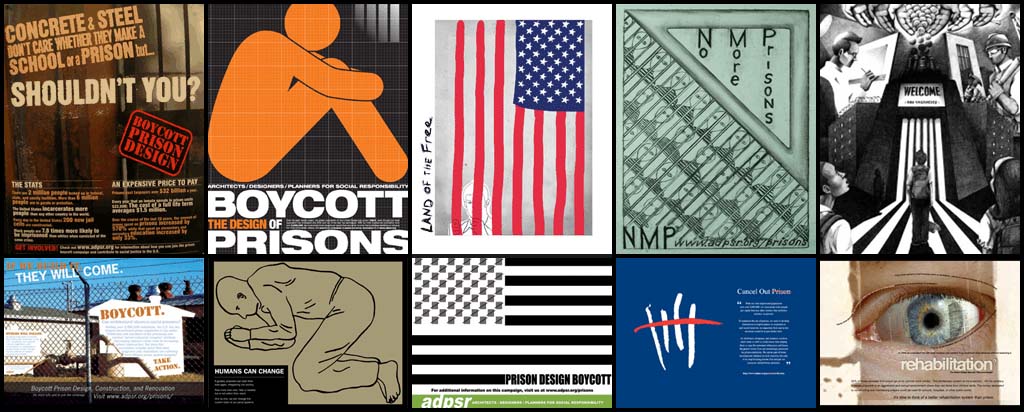
|

